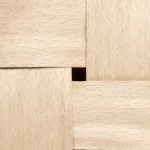How do I clean stained woodwork? Whether you have hardwood floors, furniture, or other wooden surfaces in your home, dealing with stains can be a frustrating task. In this article, we will explore the different types of wood stains and their impact on various types of woodwork.
We will also discuss DIY methods for effectively cleaning stained woodwork, the importance of regular maintenance, using natural cleaning agents, common mistakes to avoid, and when to call in professional maintenance services. By understanding the nature of wood stains and how to properly clean them, you can ensure the longevity of your woodwork investment.
When it comes to understanding the types of wood stains, it’s important to recognize that there are various categories such as oil-based stains, water-based stains, gel stains, and even dye stains. Each type of stain may have a different effect on different types of woodwork. Therefore, it’s crucial to explore the differences and understand how they can impact the appearance and durability of your wooden surfaces.
In addition to exploring the types of wood stains and their impact on woodwork, we will also delve into practical DIY methods for cleaning stained woodwork. From using natural cleaning agents to avoiding common mistakes in stain removal processes, we will provide you with tips and tricks for successfully restoring the beauty of your wooden surfaces. Preventing future stains through regular maintenance will also be discussed as an essential aspect of preserving your woodwork investment.
The Impact of Stains on Different Types of Woodwork
When it comes to woodwork, different types of wood can react differently to stains. Understanding the impact of stains on different types of woodwork is crucial in order to effectively clean and maintain your wooden surfaces.
Here are some insights into how stains can affect various types of woodwork:
- Softwoods: Softwoods such as pine, cedar, and redwood are more prone to soaking up stains due to their porous nature. This can result in darker and more intensified staining, making it essential to act quickly when cleaning stained softwood surfaces.
- Hardwoods: Hardwoods like oak, mahogany, and cherry have a tighter grain structure, which can make them less susceptible to deep staining. However, they can still be affected by surface stains which may require prompt attention to prevent permanent discoloration.
- Engineered Wood: Engineered wood products like plywood and MDF (medium-density fiberboard) may have different reactions to stains compared to natural hardwoods. The layers and bonding agents in these materials may respond differently to cleaning methods, requiring careful consideration.
Understanding how different types of woodwork react to stains is the first step in effectively addressing stain removal and maintenance. By taking into account the unique characteristics of each type of wood, you can tailor your cleaning approach for optimal results.
Remember that prevention is key when it comes to maintaining the beauty and integrity of your woodwork. Regular dusting and protection from moisture and spills can go a long way in preventing future staining and preserving the natural beauty of your wooden surfaces.
DIY Methods for Cleaning Stained Woodwork
Cleaning stained woodwork can be a daunting task, but with the right techniques and products, you can effectively restore its natural beauty. Here are some DIY methods to help you remove stains from your woodwork:
1. Use Baking Soda: Create a paste using baking soda and water and apply it to the stained area. Let it sit for a few minutes before scrubbing gently with a soft cloth. This method is effective for removing surface stains and can also help eliminate odors.
2. Vinegar Solution: Mix equal parts of white vinegar and water in a spray bottle. Spray the solution onto the stained woodwork and let it sit for a few minutes before wiping it clean with a damp cloth. Vinegar is known for its natural cleaning properties and can help lift tough stains.
3. Lemon Juice: The acidic nature of lemon juice makes it an effective stain remover for woodwork. Simply squeeze some fresh lemon juice onto the stained area, let it sit for a few minutes, and then wipe it clean with a damp cloth.
These DIY methods not only help in removing stains from woodwork but also ensure that your furniture retains its natural shine without causing any damage to the wood. By using these natural ingredients, you can clean stained woodwork effectively while being environmentally friendly at the same time.
The Importance of Regular Maintenance
Regular maintenance is crucial to prevent future stains on your woodwork. By consistently caring for your woodwork, you can avoid the buildup of dirt, dust, and other particles that can lead to staining over time. To keep your woodwork in top condition, consider implementing a routine upkeep schedule to ensure its longevity.
One effective method for preventing future stains is by regularly dusting and cleaning your woodwork. Dust particles can accumulate on the surface of woodwork and eventually cause discoloration if left unattended. By incorporating a regular dusting routine into your cleaning regimen, you can significantly reduce the risk of staining.
Additionally, applying a protective sealant or finish to your woodwork can act as a barrier against potential stains. This creates a protective layer on the surface of the wood, making it easier to clean and maintain. Be sure to follow proper application techniques and reapply the sealant as needed to maintain its effectiveness in preventing stains.
Using Natural Cleaning Agents
Natural cleaning agents are a great option for those who are looking to clean stained woodwork in an eco-friendly way. Not only are they better for the environment, but they can also be just as effective as traditional cleaning products. In this section, we will explore some natural cleaning agents that you can use to effectively remove stains from your woodwork.
Vinegar and Water Solution
One of the most popular natural cleaning agents for woodwork is a simple solution of vinegar and water. Vinegar is known for its acidic properties, which makes it effective at breaking down stains and grime. To create a vinegar and water solution, simply mix equal parts of white vinegar and water in a spray bottle. Spray the solution onto the stained woodwork and wipe it off with a clean cloth.
Lemon Juice
Lemon juice is another natural cleaning agent that can be used to remove stains from woodwork. The acidity of lemon juice makes it an effective stain remover, particularly for water stains or mildew. Simply squeeze fresh lemon juice onto the stained area and let it sit for a few minutes before wiping it away with a clean cloth.
Baking Soda and Olive Oil Paste
For tougher stains on woodwork, you can create a paste using baking soda and olive oil. Mix equal parts of baking soda and olive oil to form a paste, then apply it to the stained area with a soft cloth in circular motions. This paste can help lift tough stains while also conditioning the wood at the same time.
Using natural cleaning agents is not only beneficial for your woodwork, but it also helps reduce your impact on the environment. By incorporating these eco-friendly options into your cleaning routine, you can keep your woodwork looking beautiful while also promoting sustainability.
Common Mistakes to Avoid
When it comes to cleaning stained woodwork, there are some common mistakes that people make that can actually worsen the stain or damage the wood. One of the most important things to remember is to avoid using harsh chemical cleaners or abrasive tools that can scratch and discolor the wood. Instead, opt for gentle, natural cleaning agents and soft cloths to preserve the integrity of the wood.
Another common mistake is not properly testing a new cleaning solution on a small, inconspicuous area of the woodwork before applying it to the entire surface. This can help you avoid any unexpected reactions or damage to the wood. Additionally, be sure to follow any manufacturer’s instructions for cleaning and maintenance products to ensure optimal results.
It’s also important to avoid scrubbing too vigorously when trying to remove stains from woodwork. Overzealous scrubbing can cause additional damage to the wood finish and can actually push the stain deeper into the grain of the wood. Instead, gently blot and dab at stains with a clean cloth and let any cleaning solution sit for a few minutes before wiping it away.
Overall, taking a cautious and gentle approach is key when cleaning stained woodwork. By avoiding these common mistakes, you can effectively remove stains from your wood surfaces while preserving their beauty and longevity.
| Common Mistakes in Stain Removal | Pitfalls |
|---|---|
| Avoid using harsh chemical cleaners | Can worsen stain or damage wood |
| Not testing new cleaning solutions | Can cause unexpected reactions or damage |
| Scrubbing too vigorously | Can cause additional damage and push stain deeper into wood grain |
Professional Maintenance Services
When it comes to cleaning stained woodwork, sometimes DIY methods may not be effective enough to fully remove stubborn stains. In such cases, it may be necessary to call in professional maintenance services to ensure that the woodwork is properly cleaned and restored.
Assessing the Severity of Stains
Before deciding whether it’s time to call in the experts, it’s important to assess the severity of the stains on your woodwork. Superficial or light stains can often be effectively removed with DIY methods, but deeper or more persistent stains may require professional attention.
Specialized Equipment and Expertise
Professional maintenance services have access to specialized equipment and expertise that can effectively remove even the toughest stains from woodwork. They are trained to identify different types of stains and understand how to safely and effectively remove them without damaging the wood itself.
When to Consider Professional Maintenance Services
If you have tried multiple DIY methods and the stains are still visible or if you are dealing with valuable or antique woodwork, it is best to consider calling in professional maintenance services. They can provide a thorough assessment of the damage and determine the best course of action for restoration.
Remember that when deciding whether to call in professional maintenance services for cleaning stained woodwork, it’s important to weigh the cost of professional services against potentially irreparable damage caused by attempting further DIY methods.
Final Thoughts and Recommendations
In conclusion, maintaining stained woodwork requires a combination of understanding the different types of stains, their impact on various wood surfaces, and utilizing effective cleaning methods. Whether you are dealing with oil-based, water-based, or gel stains, it is crucial to identify the appropriate cleaning techniques that will not cause further damage to your woodwork.
By using natural cleaning agents and avoiding common mistakes in stain removal, you can ensure the longevity of your wood investment while also protecting the environment.
Regular maintenance is key to preventing future stains and preserving the beauty of your woodwork. By implementing a routine cleaning schedule and addressing any spills or marks promptly, you can avoid the frustration of stubborn stains and maintain the appearance of your wood surfaces. Additionally, seeking professional maintenance services when necessary can provide specialized care and expertise for more challenging stain removal tasks.
To achieve success in cleaning stained woodwork, it is important to be proactive in caring for your investment. With proper knowledge and careful attention to detail, you can effectively clean stained woodwork without causing further damage. By incorporating eco-friendly cleaning agents and embracing preventative maintenance measures, you can enjoy beautiful and long-lasting wood surfaces in your home or office.
Frequently Asked Questions
What Is the Best Cleaner for Stained Wood?
The best cleaner for stained wood is a mild soap mixed with water. This gentle solution helps to remove dirt, grime, and stains without damaging the wood’s finish. Avoid harsh chemicals or abrasive cleaners that can strip away the stain.
How Do You Clean Wood After Staining?
Cleaning wood after staining requires a delicate touch. Use a soft cloth or sponge dampened with soapy water to wipe down the surface. Gently scrub any stubborn spots, but avoid using excessive force to prevent damage to the newly applied stain. Once clean, dry the wood thoroughly with a clean towel.
What Is the Best Way to Clean Dirty Woodwork?
The best way to clean dirty woodwork is to start by dusting or vacuuming the surface to remove any loose dirt or debris. Then, use a mixture of warm water and mild dish soap to gently clean the woodwork, wiping it down with a soft cloth. Be sure to dry the woodwork completely after cleaning to prevent any moisture damage.

Hi everyone! I’m a woodworker and blogger, and this is my woodworking blog. In my blog, I share tips and tricks for woodworkers of all skill levels, as well as project ideas that you can try yourself.





